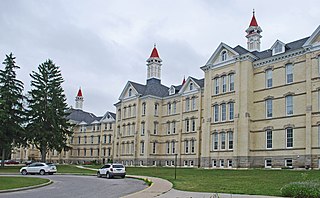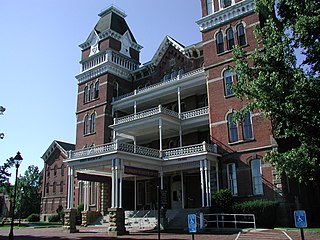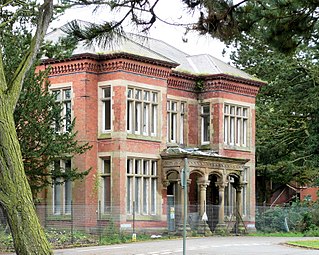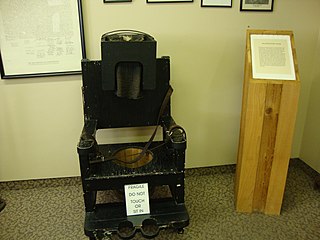
Psychiatric hospitals, also known as mental health hospitals or behavioral health hospitals, are hospitals or wards specializing in the treatment of severe mental disorders, such as schizophrenia, bipolar disorder, eating disorders, dissociative identity disorder, major depressive disorder and many others. Psychiatric hospitals vary widely in their size and grading. Some hospitals may specialize only in short-term or outpatient therapy for low-risk patients. Others may specialize in the temporary or permanent confinement of patients who need routine assistance, treatment, or a specialized and controlled environment due to a psychiatric disorder. Patients often choose voluntary commitment, but those who psychiatrists believe pose significant danger to themselves or others may be subject to involuntary commitment and involuntary treatment. Psychiatric hospitals are sometimes referred to as psychiatric wards/units, psych, or wards/units when they are located as a unit within a hospital.

The Institute of Mental Health (IMH), formerly known as Woodbridge Hospital, is a psychiatric hospital in Hougang, Singapore.

Austin State Hospital (ASH), formerly known until 1925 as the Texas State Lunatic Asylum, is a 299-bed psychiatric hospital located in Austin, Texas. It is the oldest psychiatric facility in the state of Texas, and the oldest continuously operating west of the Mississippi River. It is operated by the Texas Health and Human Services Commission.

The Athens Lunatic Asylum, now a mixed-use development known as The Ridges, was a Kirkbride Plan mental hospital operated in Athens, Ohio, from 1874 until 1993. During its operation, the hospital provided services to a variety of patients including Civil War veterans, children, and those declared mentally unwell. After a period of disuse the property was redeveloped by the state of Ohio. Today, The Ridges are a part of Ohio University and house the Kennedy Museum of Art as well as an auditorium and many offices, classrooms, and storage facilities.

Fulbourn Hospital is a mental health facility located between the Cambridgeshire village of Fulbourn and the Cambridge city boundary at Cherry Hinton, about 5 miles (8 km) south-east of the city centre. It is managed by the Cambridgeshire and Peterborough NHS Foundation Trust. The Ida Darwin Hospital site is situated behind Fulbourn Hospital. It is run and managed by the same trust, with both hospitals sharing the same facilities and staff pool.
Moral treatment was an approach to mental disorder based on humane psychosocial care or moral discipline that emerged in the 18th century and came to the fore for much of the 19th century, deriving partly from psychiatry or psychology and partly from religious or moral concerns. The movement is particularly associated with reform and development of the asylum system in Western Europe at that time. It fell into decline as a distinct method by the 20th century, however, due to overcrowding and misuse of asylums and the predominance of biomedical methods. The movement is widely seen as influencing certain areas of psychiatric practice up to the present day. The approach has been praised for freeing sufferers from shackles and barbaric physical treatments, instead considering such things as emotions and social interactions, but has also been criticised for blaming or oppressing individuals according to the standards of a particular social class or religion.

Deinstitutionalisation is the process of replacing long-stay psychiatric hospitals with less isolated community mental health services for those diagnosed with a mental disorder or developmental disability. In the late 20th century, it led to the closure of many psychiatric hospitals, as patients were increasingly cared for at home, in halfway houses and clinics, in regular hospitals, or not at all.

Claybury Hospital was a psychiatric hospital in Woodford Bridge, London. It was built to a design by the English architect George Thomas Hine who was a prolific Victorian architect of hospital buildings. It was opened in 1893 making it the Fifth Middlesex County Asylum. Historic England identified the hospital as being "the most important asylum built in England after 1875".

Knowle Hospital, was a psychiatric hospital that was repurposed as the village of Knowle near the town of Fareham in Hampshire, southern England, which opened in 1852 and closed in 1996.

Whittingham Hospital was a psychiatric hospital in the parish of Whittingham, near Preston, Lancashire, England. The hospital opened in 1873 as the Fourth Lancashire County Asylum and grew to be the largest mental hospital in Britain, and pioneered the use of electroencephalograms (EEGs). It closed in 1995.

The lunatic asylum or insane asylum was an early precursor of the modern psychiatric hospital.

St. Brendan's Hospital was a psychiatric facility located in the north Dublin suburb of Grangegorman. It formed part of the mental health services of Dublin North East with its catchment area being North West Dublin. It is now the site of a modern mental health facility known as the "Phoenix Care Centre". Since the official opening of the Richmond Lunatic Asylum in 1815 the Grangegorman site has continuously provided institutional facilities for the reception of the mentally ill until the present day. As such the Phoenix Care Centre represents the continuation of the oldest public psychiatric facility in Ireland.

Rainhill Hospital was a very large psychiatric hospital complex that was located in Rainhill, Lancashire, England.

The Glore Psychiatric Museum is part of a complex of St. Joseph, Missouri, museums, along with the Black Archives Museum, the St. Joseph Museum, and the American Indian and History Galleries. The Glore exhibits feature the 130-year history of the adjacent state mental hospital, and illustrate the history of mental health treatment through the ages. It has been called one of the fifty most unusual museums in the United States.

Lancaster Moor Hospital, formerly the Lancaster County Lunatic Asylum and Lancaster County Mental Hospital, was a mental hospital in Lancaster, Lancashire, England, which closed in 2000.

Holywell Hospital is a facility that provides a range of mental health services in the Northern Health and Social Care Trust. Based on a 140-acre site in Antrim, the 149-bed facility is managed by the Northern Health and Social Care Trust.

Winwick Hospital was a mental health facility at Winwick, Cheshire, England.
The Experiences of an Asylum Doctor, with suggestions for asylum and lunacy law reform is a 1921 book written by British general practitioner Montagu Lomax (1860–1933). The book was an exposé of conditions within two English lunatic asylums based on Lomax's experiences as an Asylum medical officer between 1917 and 1919.



















